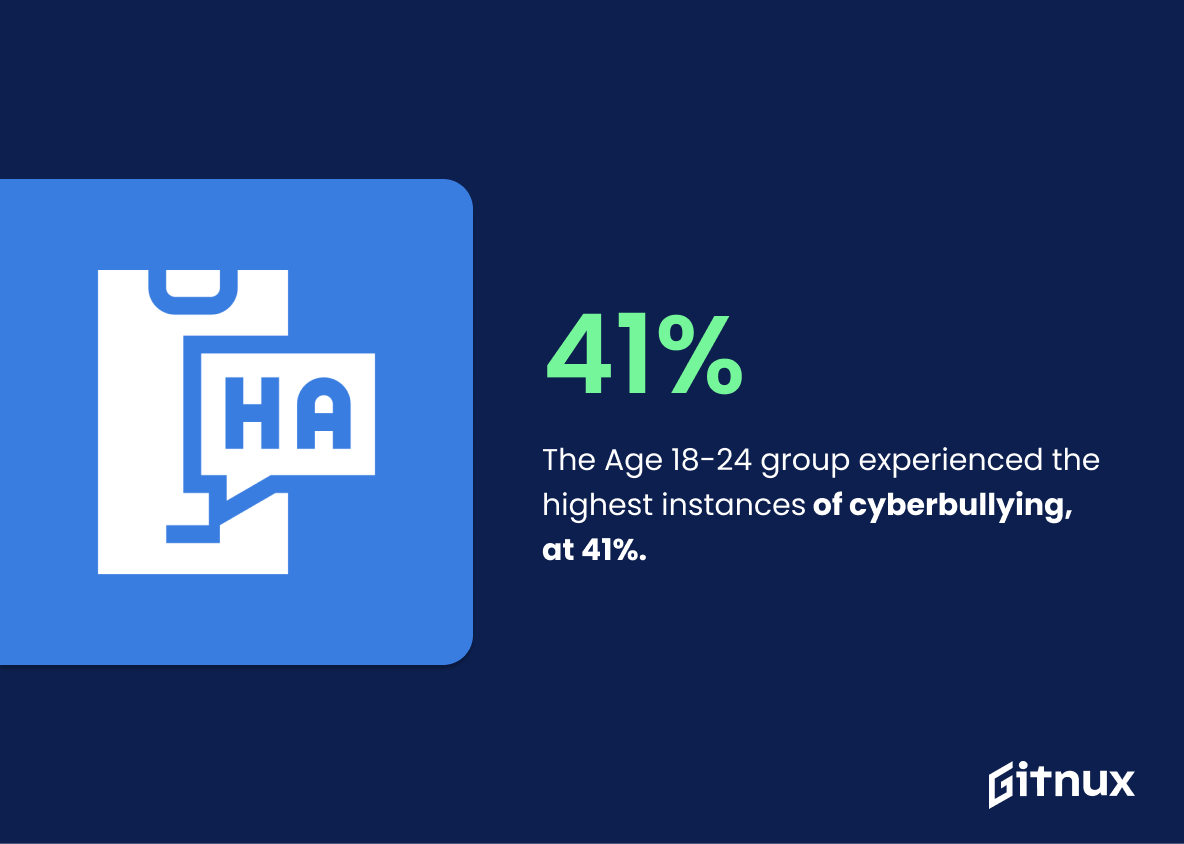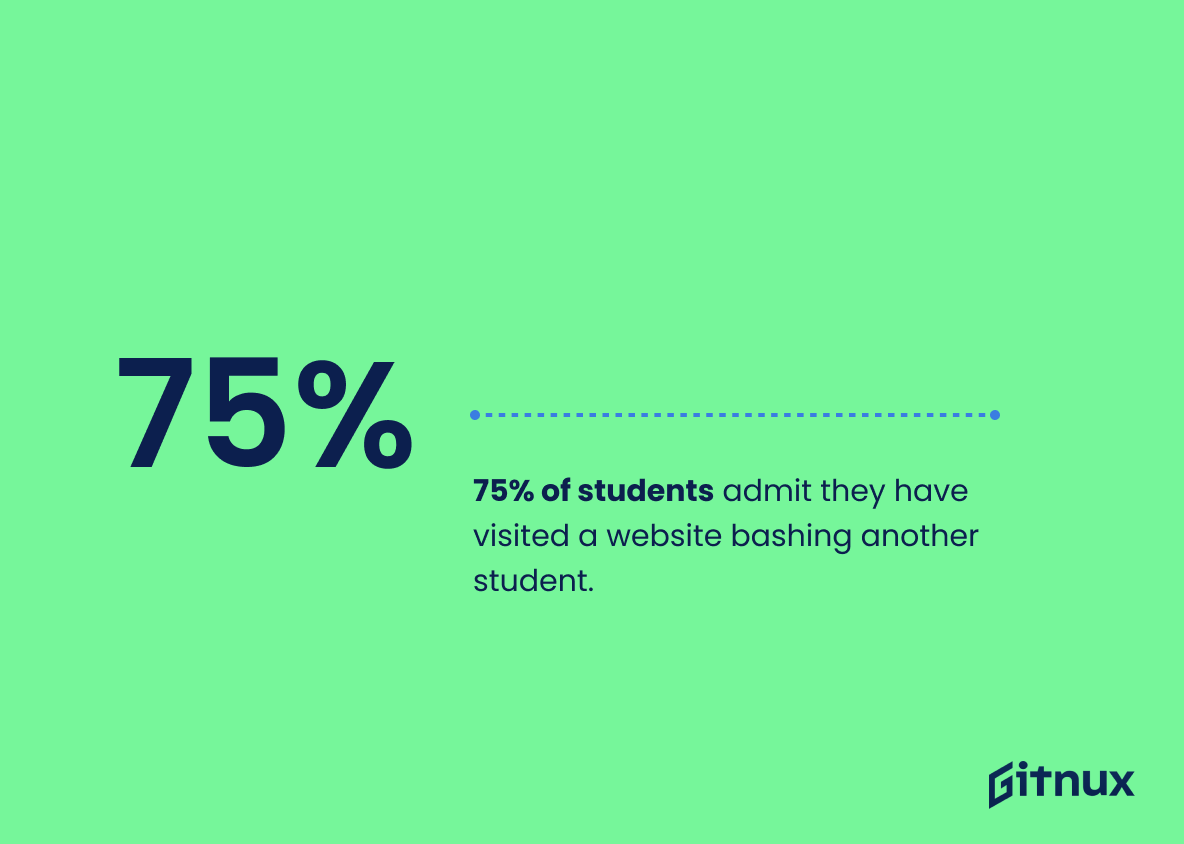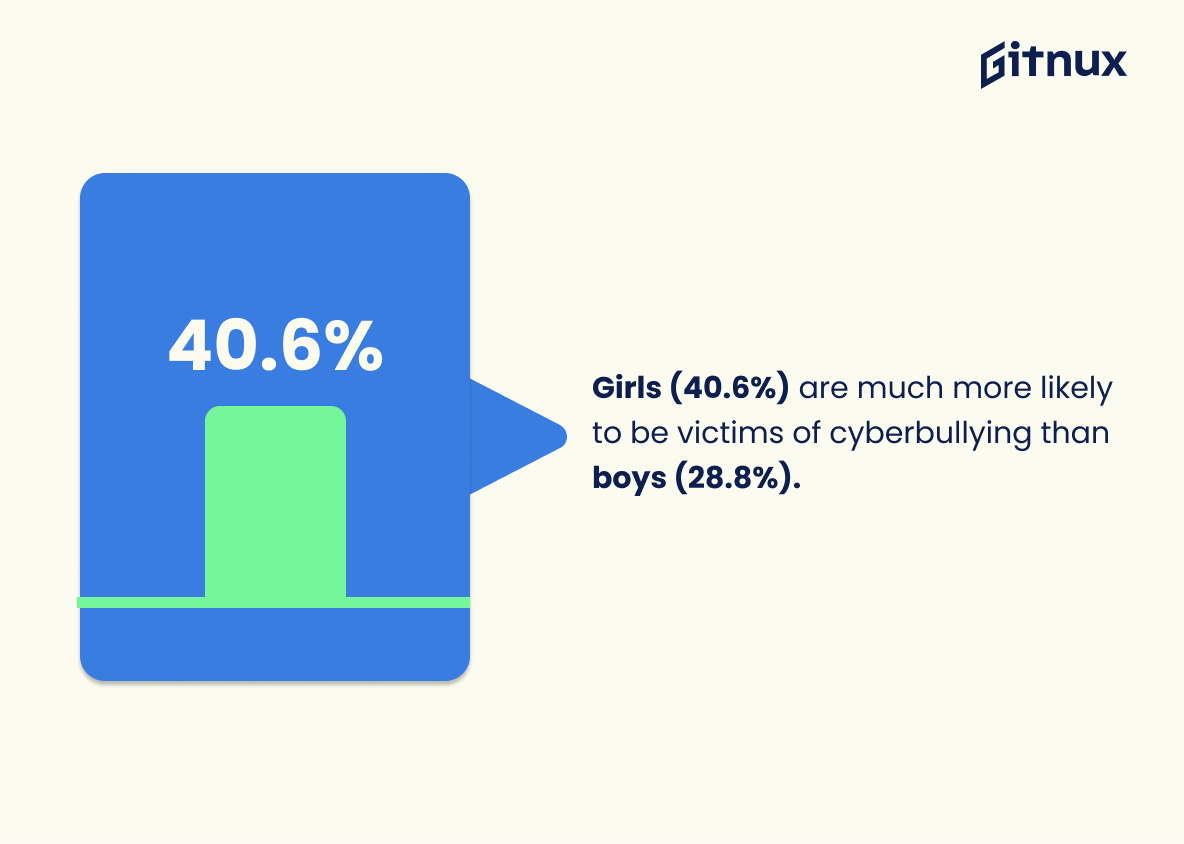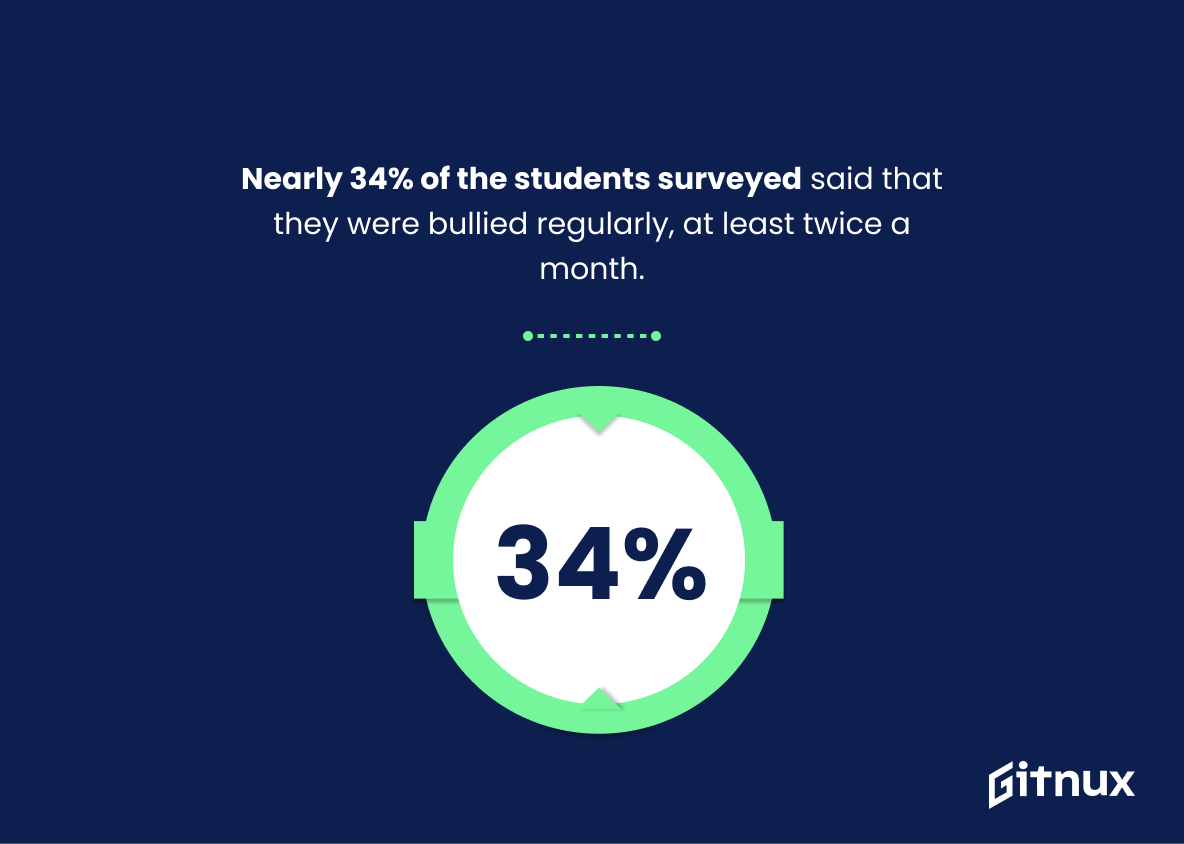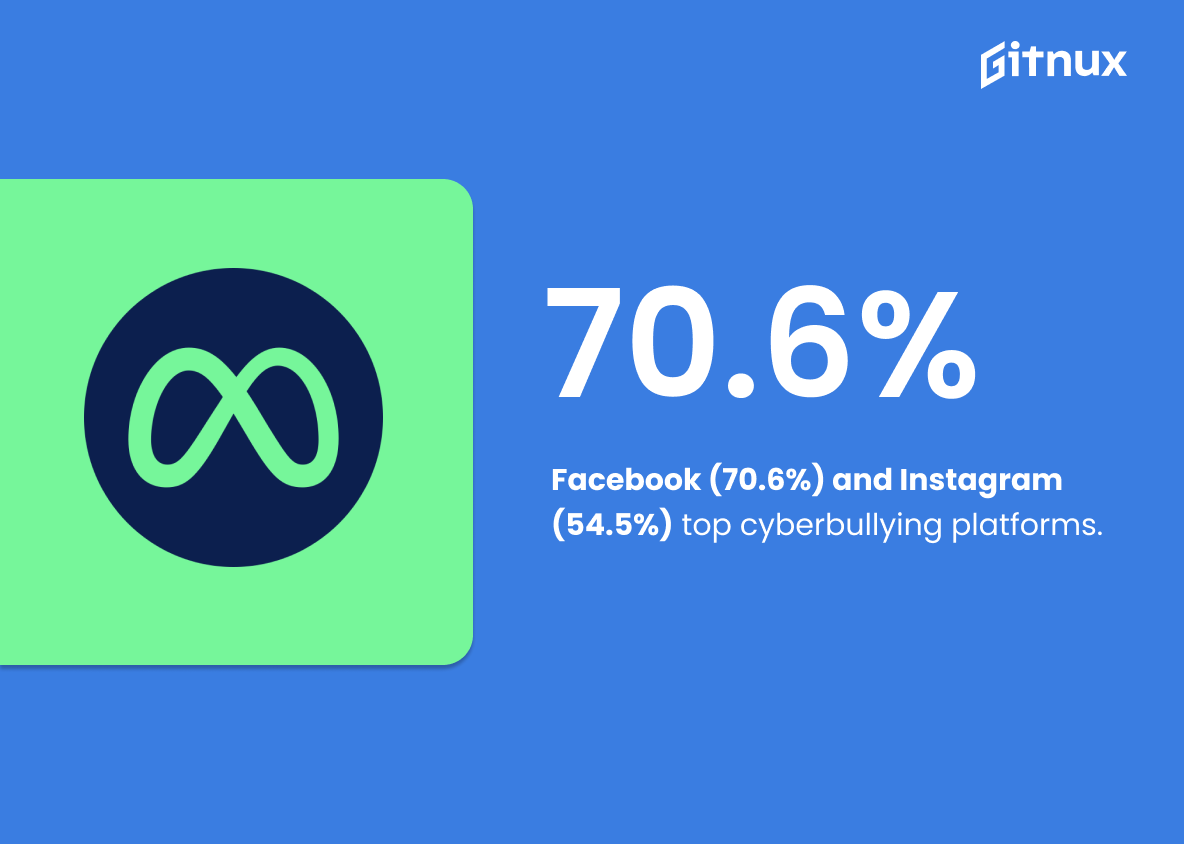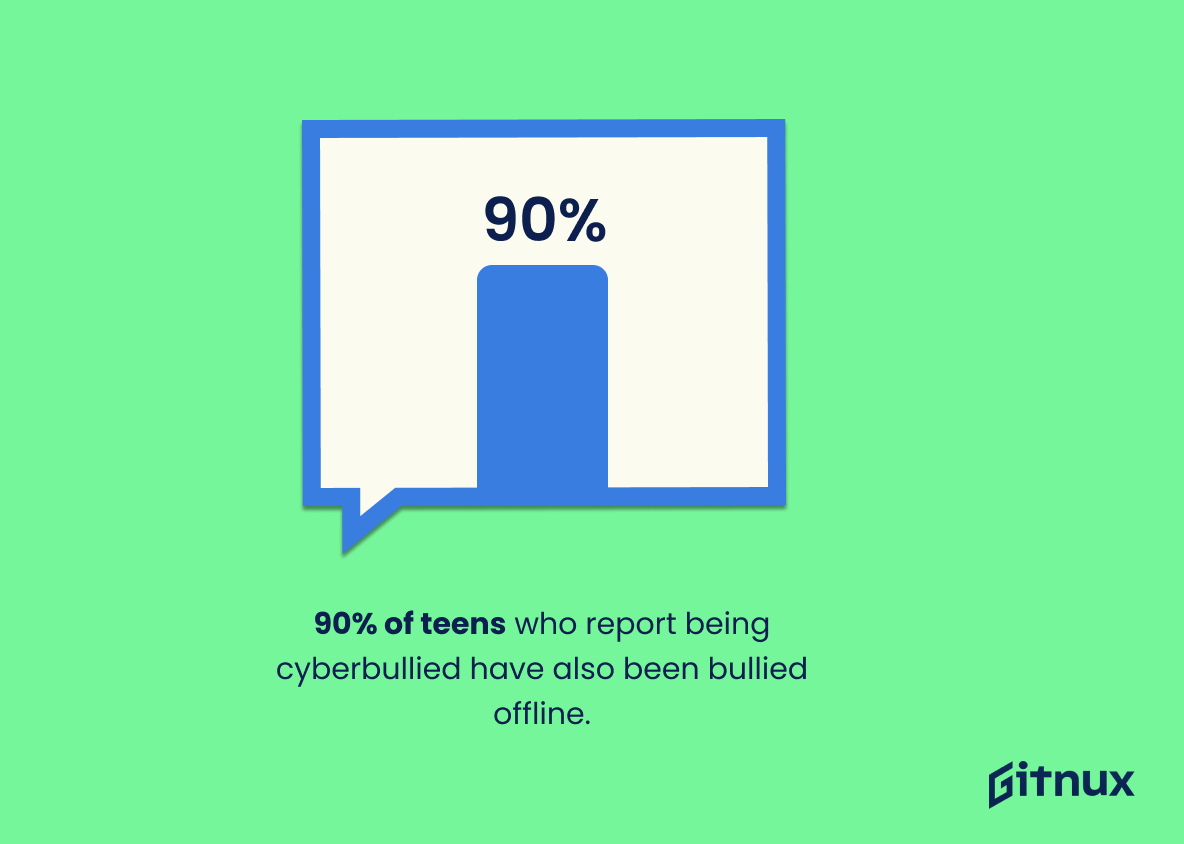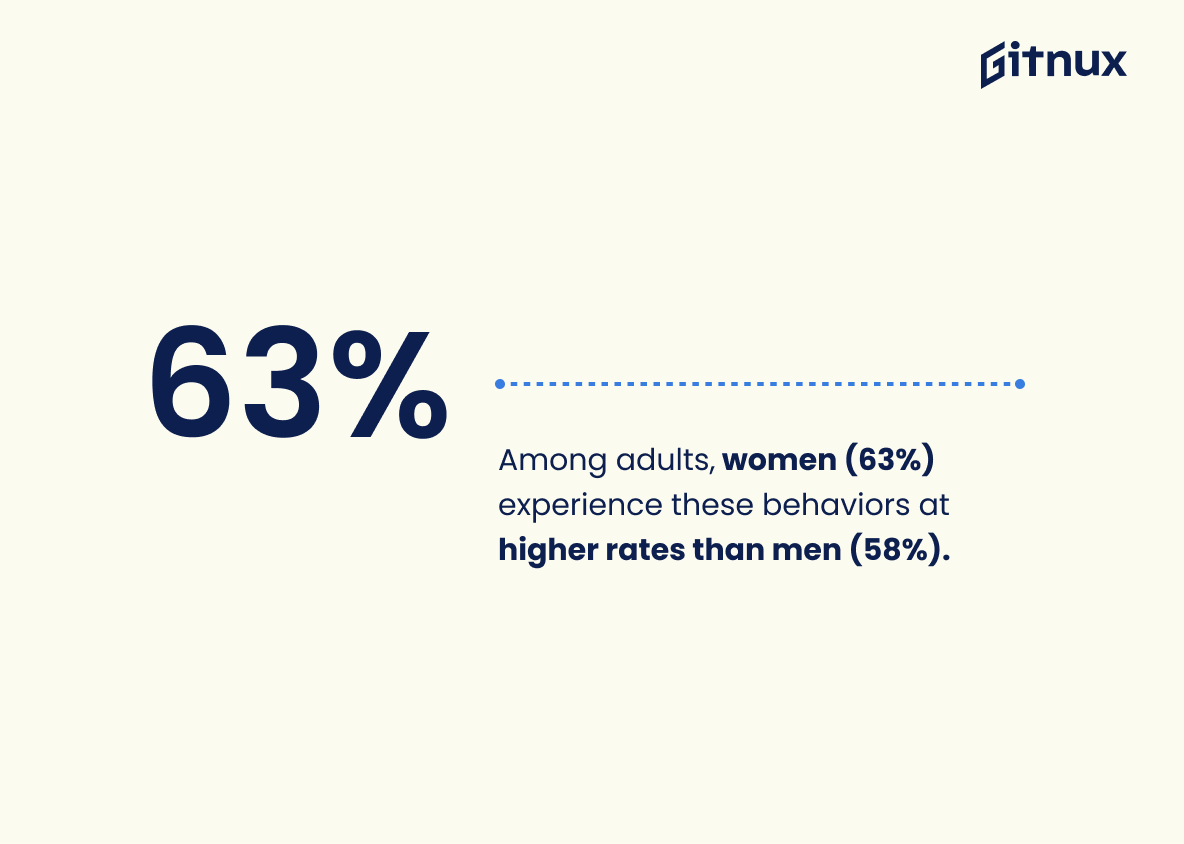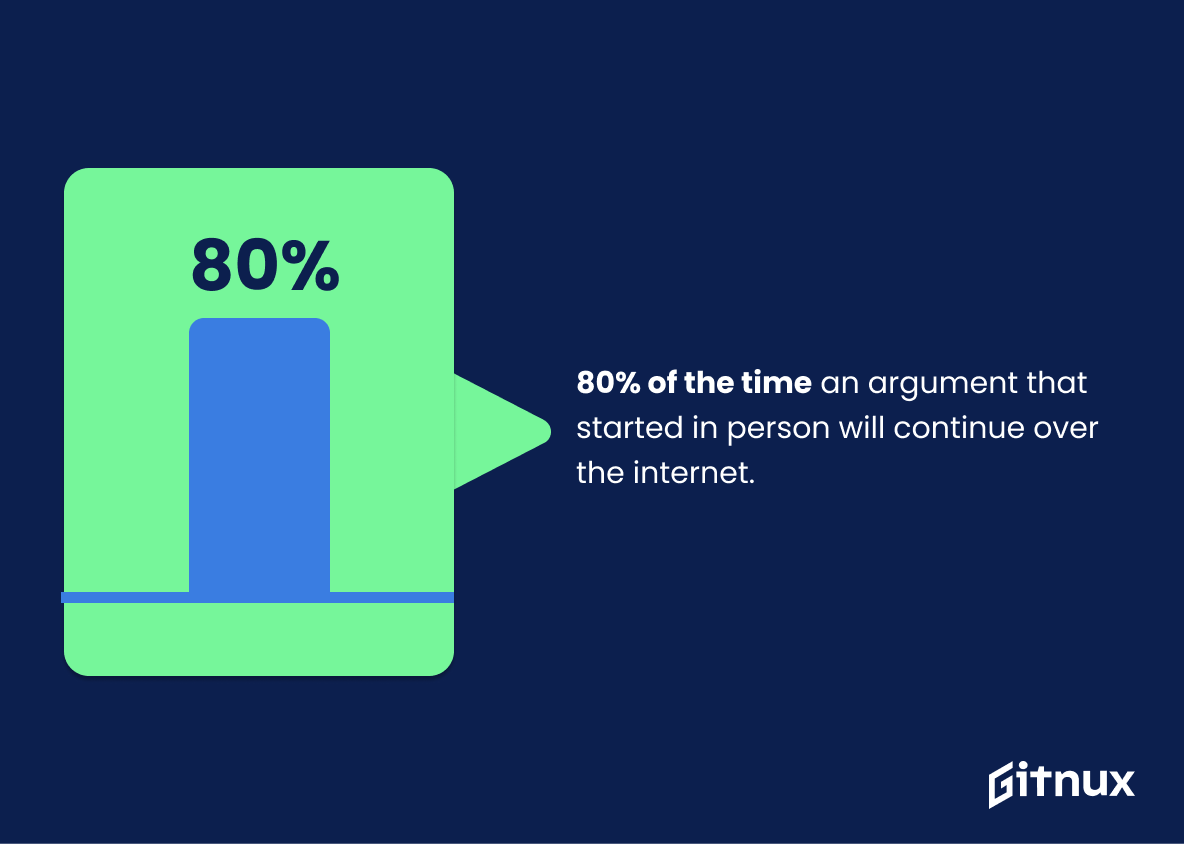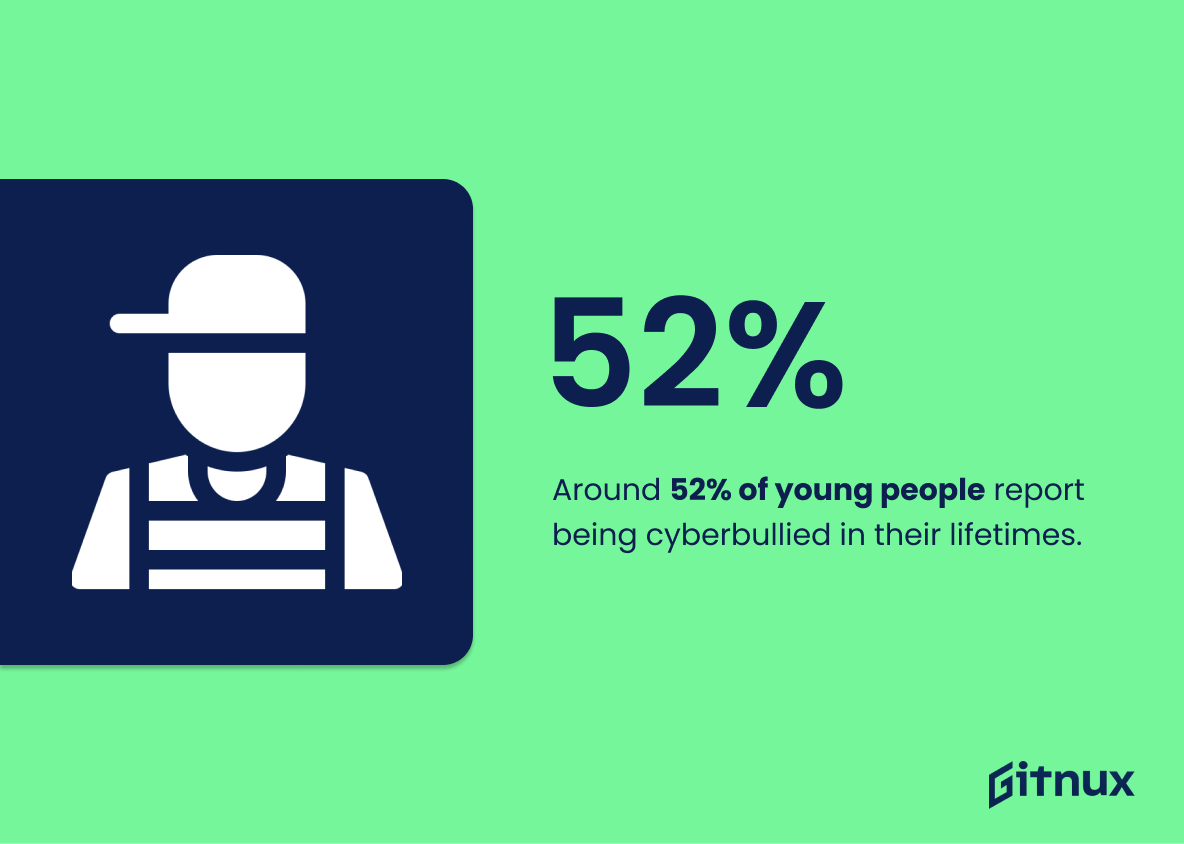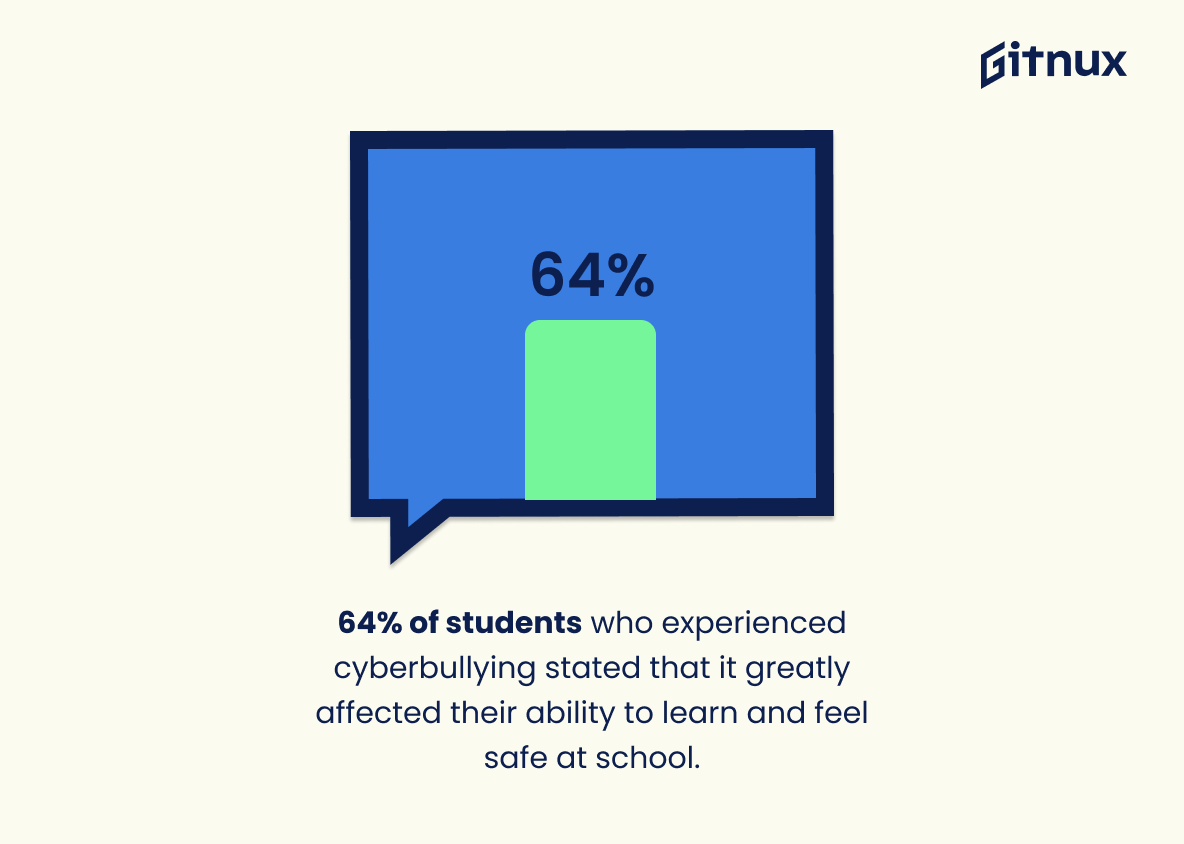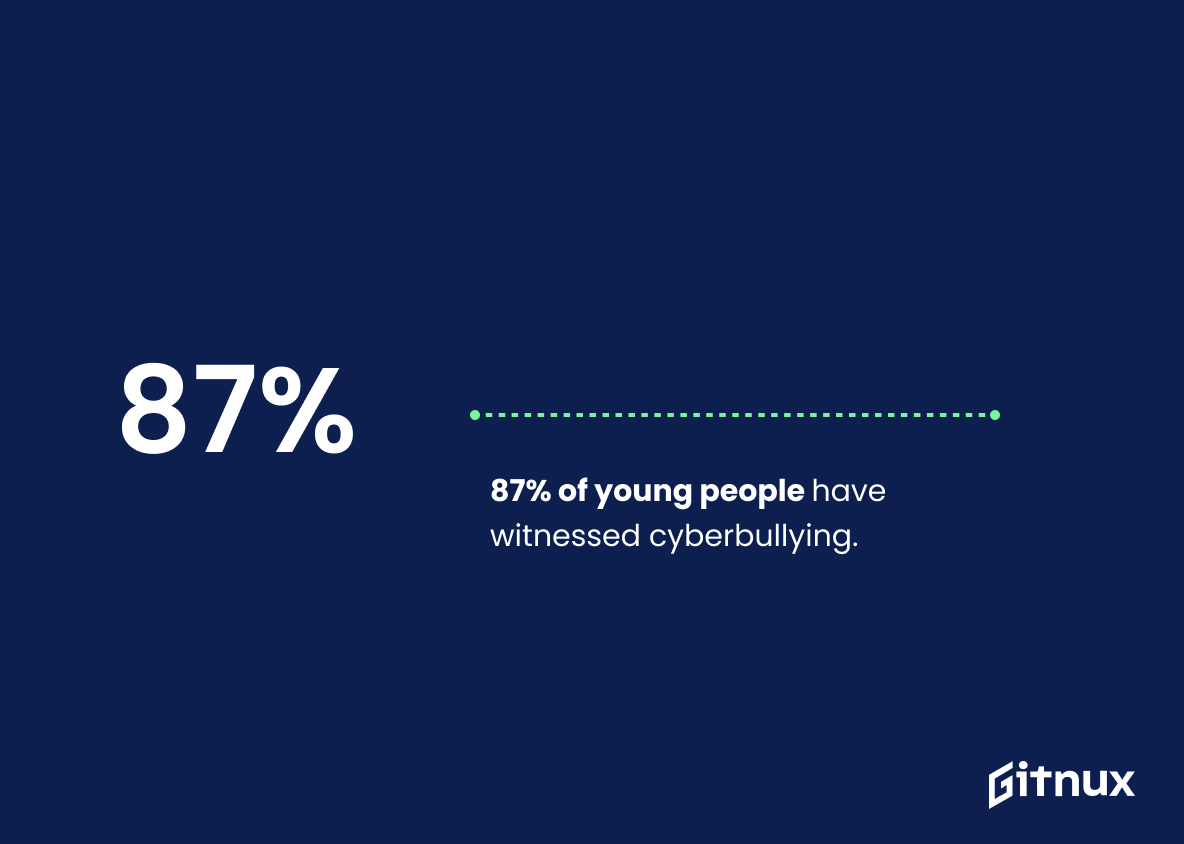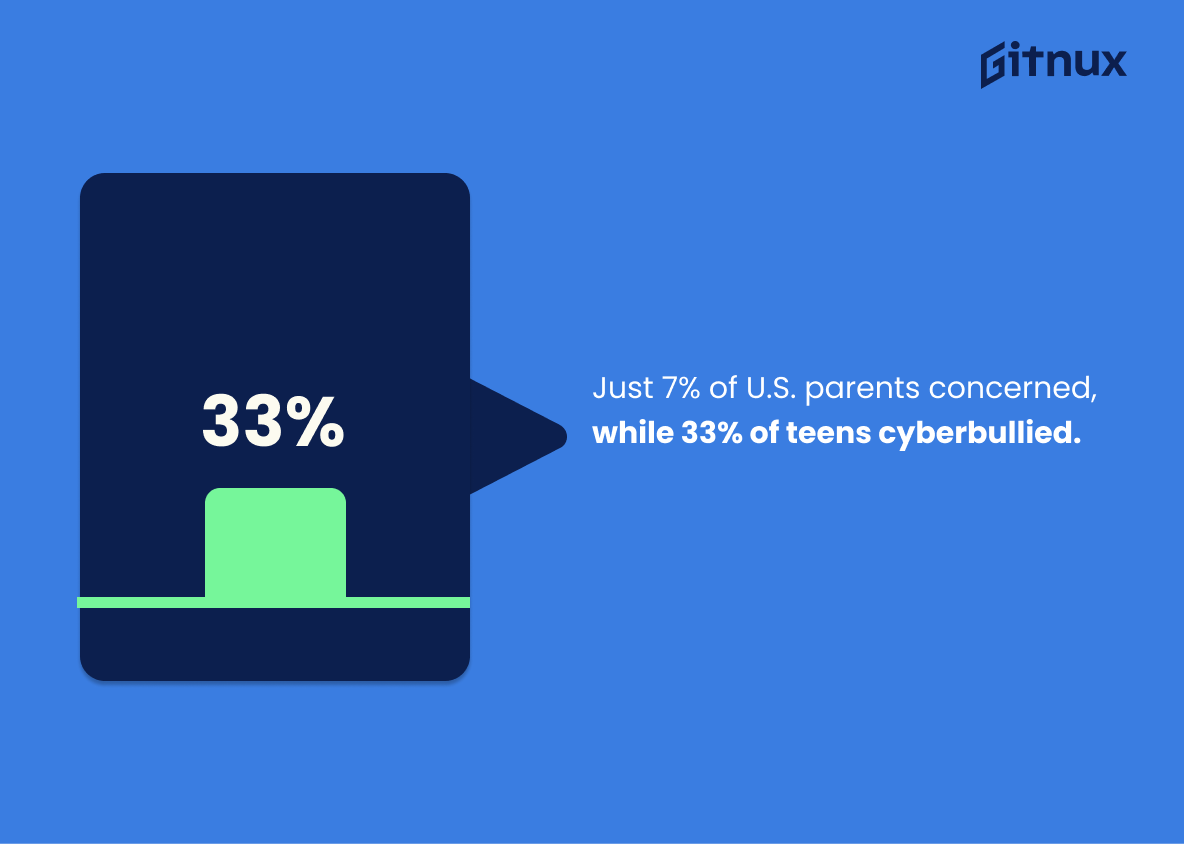In our modern, digital-centric society, social media platforms have emerged as important virtual spaces for communication and interaction. However, with the rise of this virtual landscape, a disturbing trend has also escalated – bullying. Today, social media does not just connect us; it also exposes us to the darker side of humanity, with online harassment and cyberbullying causing profound distress among the users, particularly the younger population.
In this blog post, we delve into the chilling world of cyberbullying, using compelling and alarming statistics to shed light and raise awareness on the extent of bullying on social media platforms globally. These stats are not meant to unsettle you, but to inform, empower and encourage substantial actions against this pressing digital epidemic.
The Latest Bullying On Social Media Statistics Unveiled
The Age 18-24 group experienced the highest instances of cyberbullying, at 41%.
Highlighting the figure that 41% of cyberbullying instances occur within the 18-24 age group paints a stark picture for our readers, illustrating the heart of the online bullying issue. It places the spotlight on a demographic often assumed to be tech-savvy and resilient, yet reveals them as the most vulnerable to such online aggression.
This insight can be a catalyst for discussions, procedural changes, and preventive efforts focusing on this age group, thus making a considerable contribution towards curbing cyberbullying in society.
55.2% of LGBTQ+ students experienced cyberbullying.
The spotlight turns to the glaring figure of 55.2%, an evocative representation of LGBTQ+ students wrestling with the dark side of the digital world: cyberbullying. This thought-provoking statistic undeniably amplifies the narrative of our blog post focused on bullying on social media statistics. Reading such a number calls for a pause, a moment of reflection on the harsh virtual reality many LGBTQ+ youth navigate daily.
Not just a number, it is a wake-up call, urging us to delve more profoundly into the implications of the digital era on vulnerable groups. It underscores the urgency to fortify our online environment, education, and support systems, taking strides towards a more inclusive and respectful virtual community.
75% of students admit they have visited a website bashing another student.
Delving into the digital realm of social media bullying, the statistic ‘75% of students confess to visiting a website that denigrates another student’ provides a stark illustration of the deep-seated issue. It underscores the pervasive nature of cyberbullying, highlighting that three out of four students have not only witnessed this hurtful behavior but have, unintentionally or not, fed into the cycle of online harassment.
This chilling number forms a testament to the urgency of addressing and combating social media bullying. It imbues the blog post with a heightened sense of relevance and draws attention to the widescale implication of the problem. Through it, the post transcends from being merely informative to sounding a clarion call for action against bullying in the modern, digital landscape.
Girls (40.6%) are much more likely to be victims of cyberbullying than boys (28.8%).
Framed within the tapestry of a blog post illustrating Bullying on Social Media Statistics, this particular piece of data sheds illuminating light on the gender-specific disparity in cyberbullying experiences. It unveils a startling trend: girls, at 40.6%, bear a significantly heavier share of cyberbullying victimhood than their male counterparts at 28.8%.
These figures add pivotal context to the narratives of online bullying, prompting us to reevaluate and bolster our anti-bullying strategies, especially considering the heightened vulnerabilities faced by young females in the digital domain. It’s a catalyst, advocating for greater gender-specific interventions and online safety measures, drawing our attention to the urgency of supporting and protecting our young girls in the vast and sometimes, intimidating, cyber world.
Nearly 34% of the students surveyed said that they were bullied regularly, at least twice a month.
Drawing from the eye-opening revelation that almost 34% of students experience bullying frequently, with at least two occurrences every month, it underscores the magnitude of the persistent bullying problem in our digital space.
Within the purview of a blog post on Bullying On Social Media Statistics, this figure casts a startling spotlight on the cyber landscape, hinting at a disturbing prevalence of virtual torment that occurs behind screens. It becomes a compelling call-to-action, articulating the urgency for collective online vigilance, proactive digital citizenship, and stricter social media policies that protect young users from such distressing encounters.
Facebook and Instagram ranked as the top two platforms where cyberbullying takes place, at 70.6% and 54.5%, respectively.
In the sphere of social media bullying statistics, understanding the prominence of Facebook and Instagram creates an illustrative panoramic view of the digital battlefield. With these platforms contributing to an alarming 70.6% and 54.5% of all cyberbullying instances respectively, this reality marks them as significant arenas of our investigation. It compels us to focus our attention sharply on these platforms, understanding their roles, responsibilities and potential countermeasures, setting the cornerstone for our mission to make the digital world safer and more inclusive.
The compelling statistics, hence, urge us to develop platform-specific prevention and intervention strategies. They put a spotlight on these social media giants, pushing us to dig deeper into their user policies, moderation systems and safety tools, painting a clearer image of the cyberbullying landscape and accelerating our collective journey to curb this menace.
90% of teens who report being cyberbullied have also been bullied offline.
Highlighting the statistic that 90% of teens who report being cyberbullied have also been bullied offline paints a vivid picture for the reader. It underscores the overlap between the digital and physical worlds teens navigate, emphasizing how the pain of bullying easily transcends boundaries.
This gives weight to the argument about the pervasiveness of bullying not only on social media platforms but also in more traditional settings. Furthermore, it challenges the perception that cyberbullying is a separate or less serious issue, reinforcing the need for concerted efforts in addressing all forms of bullying through preventative measures, policies, and education.
Among adults, women (63%) experience these behaviors at higher rates than men (58%).
The statistic describing the disparity between women (63%) and men (58%) experiencing bullying-related behaviors is a critical peg in the larger conversation around online bullying uncovered in social media. This figure unveils the gendered lens of harassment patterns, suggesting that the digital realm might not be as neutral as it seems, at least in terms of bullying.
Women edge ahead in this grim race which indicates that they could be dealing with more offensive content, slander, or unsolicited communication than their male counterparts, sparking the need for gender-responsive solutions. Highlighting this disparity brings out a deeper understanding of how online harassment varies by gender, providing a path to prioritize interventions that are gender-sensitive and inclusive.
80% of the time an argument that started in person will continue over the internet.
In a world deeply entwined with digital communication, it is insightful to observe how a staggering 80% of arguments initiated in person spill over onto the internet. As the landscape of bullying continuously evolves, these numbers paint a revealing picture of the metamorphosis of personal conflicts into online hostility, amplifying the implications of bullying on social media.
This transition from real-life disagreements to cyber conflicts amplifies the dispute’s visibility, impact, and longevity – making social media a fertile ground for relentless online bullying. It underscores the necessity of devising effective prevention strategies, promoting online etiquette, and fostering respectful digital environments. This omnipresent risk of online escalation further emboldens the urgent call to demystify and tackle the digital Pandora’s box that bullying on social media represents.
15% of students aged 12 -18 were bullied online during the 2016-2017 school year.
Unveiling the stark reality, the data point presented above delivers a crucial eye-opener about the prevalence and direness of online bullying in contemporary society. It illuminates the fact that, for the 2016-2017 school year, a distressing 15% of students, aged 12-18, were victims of this cruel, digital shadow.
This alarming datum not only underscores the relevance of our discussion on the harrowing subject of Bullying on Social Media Statistics but also resonates a call-to-action for the community to acknowledge this pressing issue that’s playing out, all too often, on social media platforms. We are not dealing with mere numbers on a screen; rather, they represent troubling lived experiences of students who are grappling with the dark side of the digital age.
Around 52% of young people report being cyberbullied in their lifetimes.
This compelling figure of 52% underscores the pervasive reality of cyberbullying among young individuals. It commands our attention and acts as a digital alarm bell, alerting us to the severity and widespread nature of online harassment. In the context of a blog post about Bullying on Social Media Statistics, it punctuates the narrative with a stark reminder that our digital landscapes are not as benign as they appear.
More than half of our young citizens traversing these terrains have been subjected to a form of hostility that leaves emotional scars. It’s as though we’ve stumbled upon an unwelcome truth hidden beneath the colorful backdrop of our social media platforms. This paints a portrait of urgent action needed to combat this growing phenomenon, making it an indispensable part of discussions and analyses surrounding social media bullying.
64% of students who experienced cyberbullying stated that it greatly affected their ability to learn and feel safe at school.
In the vast digital landscape where young minds explore, learn and grow, this figure- 64% of students impacted detrimentally by cyberbullying on their learning and safety at school, presents a chilling reality. This illustrates the startling extent of the digital pestilence in eroding not just the peace of mind but also academic potential of our next generation.
The gravity of this statistic in the context of a blog post about Bullying On Social Media Statistics, isn’t just a validation of the problem, but also an urgent call to vigilance, empathy, legislative action and innovative countermeasures against this relentless online menace.
87% of young people have witnessed cyberbullying.
Shining a spotlight on the alarming reality, the stark figure of ‘87% of young people having witnessed cyberbullying’ serves as a thunderous wake-up call, underlining the urgency to contemplate the gravity of the situation. In the vast digital jungle of social media, it is increasingly becoming a battlefield for bullying, transcending the physical boundaries allowing young minds to encounter hostility from screens they trust.
This breathtaking statistic threads into the very fabric of the narrative on Bullying on Social Media Statistics, acting as a robust pillar that holds the argument aloft. It does not merely quantify the problem but amplifies the voices of those facing the brunt of digital animosity. Ensnaring almost nine out of every ten young individuals, this statistic is a profound testament to the sprawling landscape of online bullying, pushing us to not only recognize but also force movements to rectify this pressing cyber menace.
Only 7% of U.S. parents are worried about cyberbullying, even though 33% of teenagers have been victims of cyberbullying.
Shedding light on the wide gap between parental concerns and actual victimization rates, the statistic reveals a startling disconnect. With a mere 7% of U.S. parents expressing alarm about cyberbullying, in sharp contrast to the staggering third of teenagers falling prey to it, we are led to scrutinize the ecosystem of ignorance or denial that might be surrounding this issue.
This statistic encourages us to delve deeper into the reasons behind this gross underestimation, while also pushing for enhanced parental awareness and effective communication channels between parents and children. It underscores the urgent need for targeted educational programs about the digital dangers lurking on social media platforms for a blind-spot-free understanding of the teenage cyber world.
Conclusion
As the statistics highlight, bullying on social media has become an increasingly prevalent issue in our digital society. The numbers are alarming, reflecting the urgent need for enhanced safety measures, education, and comprehensive policies. We must collaboratively fight against online harassment and strive for a safer digital landscape for users of all ages, focusing on the transformation of current cyber etiquette norms.
There is an undeniable imperative to ensure that social media platforms don’t just connect us but also protect us. Addressing the issue of bullying on social media starts with each one of us – be it users, parents, educators, or tech companies – promoting empathy, tolerance and respect for others online.
References
0. – https://www.www.pewresearch.org
1. – https://www.www.statista.com
2. – https://www.www.internetmatters.org
3. – https://www.www.ditchthelabel.org
4. – https://www.www.broadbandsearch.net
5. – https://www.www.stopbullying.gov
6. – https://www.www.meganmeierfoundation.org
7. – https://www.patch.com
8. – https://www.www.dosomething.org
9. – https://www.cyberbullying.org
10. – https://www.www.guardchild.com
11. – https://www.nces.ed.gov
